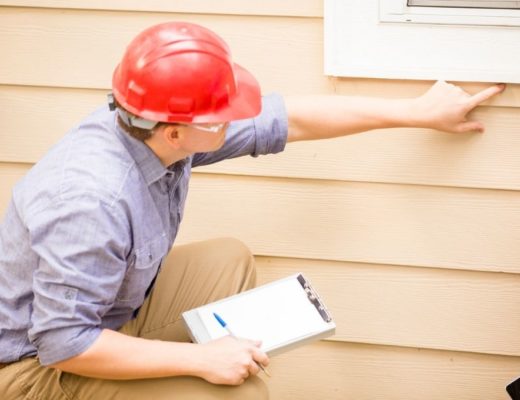Is your home looking old and tired? Are you constantly fighting the elements and finding your energy bills spiraling out of control? If so, then you need to weatherproof your home.
Luckily, it does not have to cost the earth. Below, we give our guide on weatherproofing a home.
1. Weatherproofing a Home and Roof
The first place to start when you weatherproof your home is the roof. This takes a lot of punishment, and it is the shield between the open sky and the interior. If it is damaged or broken, you are exposed to the elements.
Start by taking a look from outside the house. You should avoid climbing up on the roof and get a good view from ground level. Try to see if any tiles or coverings are loose, broken or missing.
If you have chimneys, then make sure they are not broken or weathered. The chimney itself should have a skirt around it known as flashing. This will be made from metal, tar, or cement and you should inspect this to see that it is intact and looks secure.
After this, make sure any peripheral items are intact. These can include television aerials and satellite dishes.
Once you have checked from outside, do the same from the inside of your roof space. Any sunlight coming through is a sign that you have tiles or coverings misplaced. If you can feel any wetness or dampness on insulation, then water is coming through.
2. Insulate
Insulation is vital in regulating the temperature of your home. While many people think it is only good for warming the property, it actually keeps both cool and hot air inside. If you get a good HVAC system from a reputable company like Larsen HVAC and combine it with great insulation, you will find your home stays cooler or warmer for longer, cutting down on your energy bills.
It is also relatively low cost. Once you have insulated, all you have to do is check it once a year to see if everything is in place. You can insulate both the basement and attic of your home.
3. Maintain Your Windows

After the roof, windows are the next big barrier between your interior and the elements. If you have single-framed panels, you should consider turning to double-glazed windows. Just as insulation regulates the temperature of your home, the air between the two panels of glass can do the same for your rooms.
After the glass, the frames are the next stage of house weatherproofing. Rotten frames will not just let in water and wind, but they will begin to deteriorate quickly. If you can not afford a full replacement, then gaps and holes need filling.
If you are in an area prone to storms, then you may choose to invest in a storm window treatment. Though they may be expensive, they will save you money in the long term on energy bills and make them much more durable in the event of a large natural occurrence.
4. Check the Doors
Doors are the next place that requires house weatherproofing. External doors can often let windy draughts under them, or allow cool air and heat to escape. You can solve this problem by affixing a simple draught excluder.
Once you have done this, strips of foam around door frames can help keep air out, and also work around the frames of windows. Finally, check doors are all flush with their frames and if not, ask a carpenter to realign them.
5. Allow Adequate Ventilation

Not having adequate ventilation can cause all sorts of problems in your home, both on the interior and exterior. Not only does stagnant air breed microbes, mold, and fungus, but it can also cause problems in your roof.
One example of this is ice damming. This is when hot air sits in your roof cavity, melting snow and ice on the outside. This runs to your gutters where it freezes again, forming large icicles that back up even more snow and ice on your roof.
With adequate ventilation, this can be avoided. That does not mean air has to escape. Magnetic covers with switch activation can be used in high-risk areas such as the bathroom and kitchen.
6. Keep Your Home Exterior Clean
Keeping the exterior of your home clean and tidy has a number of benefits. Not only does it make the home look good, but it also allows you to spot maintenance issues much easier. If you live in an area that suffers from storms, then the more debris and items that are in your garden, the more potential you have for loss and damage.
Start by cleaning away any leaves and twigs from your gutters. This will allow water to flow away from the house easily. If it backs up, it can cause damage to both the interior and exterior of the home.
After this, make sure you check any outbuildings as well as the main home. You need to look at the roof of sheds and garages to check they are intact and not letting in rain.
7. Repair Walls

Damage to walls can allow water damage to occur, making a lot of problems inside the home. If water turns into ice, it can expand, loosening the brickwork even further. Check both brickwork and pointing to see if you have any problems.
Cracks in the walls can have different impacts depending on their size and alignment. Thin, vertical cracks are generally fine and simply need filling. Bigger cracks that run horizontally can signify a much bigger, structural problem.
Start Before Winter
The best time to start weatherproofing a home is before winter. Checks can be done in the spring, to see if any damage has occurred over the season and rectified.
If you enjoyed our handy blog, then visit the rest of our website. We have articles on everything from home maintenance to interior design. Visit today and let us help safeguard your home for the coming season!




